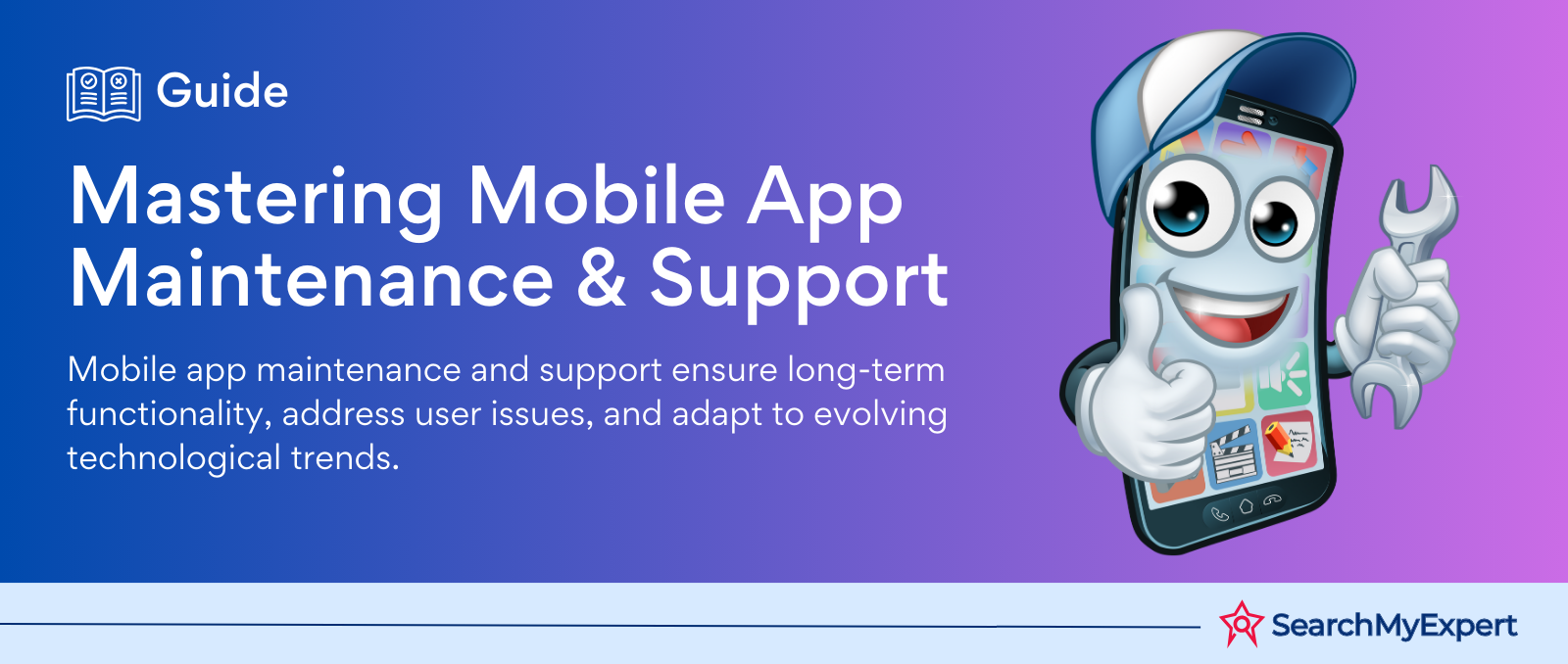Augmented Reality: Transforming e-commerce & Retail

AR in Retail and E-commerce
Augmented Reality: Transforming Industries with Innovative Technology
In the realm of modern technology, Augmented Reality (AR) stands out as a revolutionary force, seamlessly blending digital information with the physical world. AR, at its core, involves superimposing computer-generated images onto a user's view of the real environment, creating a composite view enriched with digital details. This innovative technology has rapidly gained momentum, finding diverse applications across numerous industries.
The Rise of AR in Retail and E-commerce: A Game-Changer for Businesses
Particularly notable is AR's burgeoning role in retail and e-commerce sectors. As these industries constantly seek to enhance customer experience and engagement, AR has emerged as a key player. By integrating AR, businesses are not only revamping the way consumers shop but are also setting new standards in personalized and immersive shopping experiences.
Unveiling the Benefits of AR in Retail and E-commerce
- Enhanced Customer Engagement: AR introduces an interactive element to shopping, turning passive browsing into an engaging, immersive experience. By allowing customers to visualize products in their own space or on themselves before purchasing, AR bridges the gap between online and physical shopping.
- Personalized Shopping Experiences: With AR, personalization reaches new heights. Customers can see how products would look in their environment or how apparel items would fit, tailored to their personal preferences and settings.
- Boosted Conversion Rates: AR aids in reducing the uncertainty associated with online shopping. By providing a more tangible shopping experience, AR helps in increasing consumer confidence, which in turn boosts conversion rates.
- Reduced Return Rates: One of the significant challenges in e-commerce is the high rate of product returns. AR's ability to provide a more accurate preview of products helps in reducing mismatches between customer expectations and the actual product, thereby decreasing return rates.
- Enhancing Brand Image and Loyalty: Implementing AR demonstrates a brand's commitment to innovation and customer satisfaction. This not only enhances the brand's image but also fosters customer loyalty by providing a unique and futuristic shopping experience.
Reimagining the Shopping Experience: The Impact of AR in Physical Stores
Augmented Reality (AR) is not just revolutionizing the online shopping world; it's also redefining the in-store experience. By merging digital elements with the physical shopping environment, AR provides customers with an unparalleled interactive experience. Let's explore how AR is transforming the retail landscape in physical stores.
AR Applications in In-Store Shopping: Blending Digital with Physical
- Product Visualization: AR technology enables customers to visualize products in a highly interactive way. For instance, furniture stores can use AR to allow customers to see how a piece of furniture would look and fit in their own space. This level of visualization goes beyond what's possible with physical displays alone.
- Virtual Try-Ons: In the fashion and beauty industries, AR mirrors and apps allow customers to try on clothes, accessories, or makeup virtually. This not only enhances the shopping experience but also reduces the need for physical try-ons, which can be time-consuming and sometimes unhygienic.
- Interactive Displays: Retail stores are leveraging AR to create interactive displays that engage customers more deeply with products. For example, pointing a smartphone at a product or display can trigger an AR experience, such as showing how a product is made, offering styling tips, or even bringing characters to life in a kid's store.
Enhancing Customer Engagement and Brand Storytelling Through AR
- Creating Immersive Experiences: AR offers a unique way for brands to create immersive experiences that captivate customers. These experiences can range from interactive games that feature products to educational content that informs customers about the brand's values and product details.
- Personalization and Recommendations: AR can provide personalized recommendations based on customer preferences or past shopping behavior. This not only makes shopping more efficient but also more tailored to individual needs.
- Storytelling and Brand Connection: AR gives brands a creative tool to tell their stories in a way that resonates with customers. Through AR, brands can convey their history, craftmanship, sustainability efforts, or other aspects that enhance emotional connection with customers.
- Social Media Integration: Many AR experiences are designed to be shared on social media, further engaging customers and expanding brand reach. This integration encourages users to share their unique AR experiences, creating organic marketing and social proof for the brand.
Revolutionizing Online Shopping: Bridging the Physical and Digital Divide with AR
Augmented Reality (AR) is playing a pivotal role in transforming the e-commerce landscape by effectively bridging the gap between the physical and online worlds. This fusion creates a more intuitive and engaging online shopping experience, addressing many limitations of traditional e-commerce.
AR Applications in E-commerce: Enhancing Visualization and Interaction
- Advanced Product Viewing: AR allows customers to view products in 3D and 360-degree formats. This advanced viewing capability provides a clearer understanding of the product's appearance, texture, and functionality, surpassing the capabilities of standard photos and videos.
- Size and Scale Visualization: One of the major challenges in online shopping is gauging the size and scale of products. AR technology enables customers to visualize products in their actual size and scale in their own environment. For example, a customer can see how a sofa would fit in their living room or how a lamp would look on their bedside table.
- Virtual Showrooms: AR creates virtual showrooms where customers can explore a range of products in a digitally immersive environment. These showrooms can be accessed from the comfort of home, providing a shopping experience akin to visiting a physical store, but with greater convenience and accessibility.
Personalizing the Online Shopping Experience and Boosting Conversion Rates with AR
- Enhanced Personalization: AR allows e-commerce platforms to offer highly personalized experiences. Customers can see how a product would look in their personal space or how a piece of clothing would fit their body, making the shopping experience incredibly personal and tailored.
- Increased Consumer Confidence: By providing a more realistic view of products, AR helps to alleviate uncertainties that online shoppers often face. This enhanced confidence in the purchase decision leads to higher conversion rates as customers are more likely to proceed with the purchase.
- Interactive and Engaging Shopping: AR makes online shopping interactive and fun, turning a routine activity into an engaging experience. This not only attracts customers but also encourages them to spend more time on the e-commerce platform, exploring different products.
- Reduced Return Rates: With more accurate product visualizations and fitting, AR can significantly reduce the likelihood of returns. When customers have a better understanding of what they are purchasing, there is a smaller gap between expectations and reality.
Beyond Product Visualization: AR as a Tool for Informed Decision-Making
Augmented Reality (AR) is not limited to just enhancing product visualization; it also plays a crucial role in providing valuable information, thus aiding customers in making more informed purchasing decisions. By offering interactive and detailed insights into products, AR helps bridge the gap between mere visualization and practical understanding.
AR Applications for Enhanced Product Understanding
- Interactive Assembly Instructions: AR transforms the often daunting task of product assembly into a manageable and even enjoyable process. By overlaying interactive, step-by-step instructions over the real-world environment, AR guides customers through the assembly of products. This is particularly useful for items like furniture or electronics, where assembly can be complex.
- Maintenance Guides and Tutorials: Maintenance and care of products are vital for longevity and optimal performance. AR can provide interactive maintenance guides, allowing customers to point their device at the product and receive real-time, augmented instructions on maintenance procedures. This innovative approach ensures that customers have easy access to crucial information, fostering product care and longevity.
- Interactive Tutorials for Product Usage: AR can offer interactive tutorials on how to use products effectively. For instance, AR can guide users through the functionalities of a complex gadget or demonstrate the application of a makeup product. These tutorials enhance user experience and satisfaction by ensuring customers can fully utilize their purchases.
Empowering Customers through AR-Enhanced Decision-Making
- Building Consumer Confidence: By providing a comprehensive understanding of the product, AR helps in building consumer confidence. Customers are more likely to make a purchase when they feel fully informed about the product's assembly, maintenance, and usage.
- Reducing Post-Purchase Dissonance: The detailed information provided by AR aids in reducing doubts or regrets after a purchase. When customers understand what they are buying and how to use it, they are more satisfied with their decision, leading to reduced return rates.
- Enhancing Product Value Perception: AR's role in providing detailed information adds value to the product in the eyes of the consumer. This enhanced perception of value can lead to increased customer loyalty and brand advocacy.
- Facilitating Complex Purchases: For more complex or high-value items, AR's detailed guides and tutorials can be particularly influential in the decision-making process. They demystify the product, making it more accessible and understandable to the average consumer.
Building a Seamless Omnichannel Experience with Augmented Reality
Augmented Reality (AR) is a key component in crafting a seamless omnichannel experience, blurring the lines between online and offline shopping. By integrating AR, retailers can offer a consistent, engaging, and informative experience across all platforms, enhancing the overall customer journey.
AR Applications Bridging Online and Offline Shopping
- In-Store Product Information Lookup: In physical stores, AR can be used to enrich the shopping experience by providing additional product information. Customers can simply scan products using their smartphones to access detailed information, reviews, or even see how the product is used, all in real time.
- Mobile Payments and AR: AR can streamline the payment process by integrating mobile payment solutions. For instance, customers can scan items with their mobile devices to check prices and complete purchases without traditional checkout lines, creating a smoother and faster shopping experience.
- Enhancing Loyalty Programs with AR: AR can add a new dimension to loyalty programs. By incorporating AR elements, retailers can offer customers interactive and personalized rewards, like virtual coupons or gamified loyalty challenges, which can be both fun and incentivizing.
Integrating AR into Retail and E-commerce Platforms
- Consistent Brand Experience: Integrating AR across both online and offline channels ensures a consistent brand experience. Whether a customer is shopping from home or in a physical store, AR can provide the same level of engagement and information, strengthening brand identity and customer loyalty.
- Enhanced Data Collection and Personalization: AR integration allows retailers to collect valuable data about customer preferences and behaviors across different channels. This data can be used to further personalize the shopping experience, making recommendations and offers that are more aligned with individual customer needs.
- Increased Customer Engagement and Retention: By offering an interactive and informative shopping experience through AR, retailers can significantly increase customer engagement. This enhanced engagement not only attracts new customers but also helps in retaining existing ones by providing them with a unique and convenient shopping experience.
- Staying Ahead in a Competitive Market: The integration of AR is a testament to a brand’s commitment to innovation. In a highly competitive market, staying ahead of technological trends is crucial. Retailers who embrace AR are seen as forward-thinking, appealing to tech-savvy consumers and setting the pace in the retail industry.
Addressing Challenges and Obstacles in Augmented Reality Implementation
Augmented Reality (AR) technology has opened up new realms of possibilities in various fields, from education to retail. However, as with any innovative technology, AR comes with its own set of challenges and obstacles. Understanding these hurdles and proactively addressing them is crucial for the successful implementation and future growth of AR applications. In this section, we'll delve into the technical limitations, privacy concerns, security risks, and accessibility issues associated with AR, proposing viable solutions and forecasting future advancements to navigate these challenges.
Technical Limitations and Challenges
Hardware Constraints:
AR technology often requires advanced hardware, including high-resolution displays, sensors, and processing power. This can lead to limitations in terms of device compatibility and user accessibility.
- Solution: Develop lightweight, energy-efficient AR devices and optimize AR apps for a broader range of devices, including low-end smartphones.
- Future Advancement: Research is ongoing to create more compact and powerful AR glasses and headsets, integrating flexible display technology and advanced processors.
Software and Application Development:
Creating seamless AR experiences demands sophisticated software capable of interpreting and interacting with the real world.
- Solution: Invest in advanced algorithms for image recognition, spatial awareness, and real-time rendering. Encourage open-source platforms to foster innovation and collaboration.
- Future Advancement: Develop AI-driven AR platforms that can learn and adapt to various environments and user interactions.
User Experience (UX) Challenges:
Designing intuitive and user-friendly AR interfaces remains a significant challenge.
- Solution: Focus on human-centric design principles, conducting extensive user testing to ensure usability across diverse demographics.
- Future Advancement: Implement machine learning to personalize AR experiences, adapting interfaces based on individual user preferences and behaviors.
Privacy and Security Concerns
Data Privacy:
AR applications often require access to personal information and real-time environmental data, raising privacy concerns.
- Solution: Implement stringent data protection policies and offer users control over their data. Ensure compliance with global privacy regulations like GDPR.
- Outbound Link: Understanding GDPR Compliance for AR Developers.
Security Risks:
AR systems can be vulnerable to hacking, leading to potential misuse of sensitive data.
- Solution: Strengthen AR platforms with advanced encryption and robust cybersecurity protocols.
Accessibility and Inclusivity
Ensuring Broad Accessibility:
AR technology should be accessible to people with varying abilities and socioeconomic backgrounds.
- Solution: Design AR applications with universal design principles, making them usable by people with disabilities. Offer affordable AR solutions.
- Future Advancement: Develop adaptive AR technologies that can adjust to different physical and cognitive abilities.
Inclusivity in AR Experiences:
Creating AR experiences that are culturally sensitive and non-discriminatory is crucial for global adoption.
- Solution: Foster a diverse development team and engage with a broad user base for feedback and testing.
- Future Advancement: Utilize AI to customize AR experiences to reflect a diverse range of cultural contexts and language
The Future of AR in Retail and E-commerce
Augmented Reality (AR) is rapidly transforming the retail and e-commerce landscapes, offering immersive and interactive experiences that are reshaping consumer behavior. This technology not only enhances customer engagement but also provides innovative ways for businesses to showcase their products. In this section, we will explore the exciting possibilities, emerging trends, and the overall impact of AR in retail and e-commerce, concluding with a motivational call to action for businesses in these sectors.
Exciting Possibilities and Potential Impact
Virtual Try-Ons and Product Previews:
AR enables customers to try on clothes, accessories, or even makeup virtually, providing a realistic preview of products without the need for physical interaction.
- Impact: This leads to increased customer satisfaction, reduced return rates, and a more personalized shopping experience.
- Future Outlook: Advancements in 3D modeling and AI will make virtual try-ons more realistic and accurate.
Interactive Product Demonstrations:
AR can bring products to life, allowing customers to see how items like furniture or electronics would look and function in their own space.
- Impact: Enhances customer confidence in their purchasing decisions and increases engagement.
- Future Outlook: AR will become more integrated into online shopping platforms, providing real-time product interactions.
Enhanced In-Store Experiences:
Brick-and-mortar stores are using AR to create interactive and immersive experiences, blending the physical and digital worlds.
- Impact: Revitalizes in-store shopping, attracting more foot traffic and creating memorable brand experiences.
- Future Outlook: Stores will adopt AR for personalized promotions, navigation, and information display.
Emerging Trends and Innovations in AR Technology
AI-Integrated AR Experiences:
Combining AR with AI for personalized shopping experiences based on customer preferences and shopping history.
- Trend: Tailored product recommendations and customized AR experiences.
- Innovation: AI algorithms predicting user preferences and suggesting relevant AR content.
Social Media Integration:
Social media platforms are increasingly incorporating AR for virtual product showcases and promotions.
- Trend: Leveraging social media's wide reach for AR marketing campaigns.
- Innovation: AR filters and interactive ads on social platforms.
Sustainable Shopping via AR:
AR helps in making informed, sustainable choices by providing information about the product’s lifecycle and eco-friendliness.
- Trend: Increased consumer demand for sustainable products.
- Innovation: AR apps providing transparency in product sourcing and sustainability.
Call to Action for Retailers and E-commerce Businesses
Retailers and e-commerce businesses must embrace AR technology to stay ahead in the competitive market. Investing in AR is not just about adopting new technology; it's about reshaping the future of shopping and aligning with the evolving consumer expectations.
- Embrace Innovation: Stay abreast of the latest AR trends and incorporate them into your business strategy.
- Focus on User Experience: Design AR experiences that are intuitive, engaging, and add real value to the customer's shopping journey.
- Invest in Technology: Allocate resources for AR development and collaborate with tech partners to create bespoke AR solutions.
- Educate and Train Staff: Ensure your team understands AR technology and can assist customers in navigating these new experiences.
- Market Your AR Initiatives: Use effective marketing strategies to promote your AR features and attract tech-savvy consumers.
Conclusion:
Augmented Reality (AR) is not just a technological advancement; it's a game-changer in the retail and e-commerce industries. By blending digital information with the physical environment, AR provides a unique and immersive shopping experience that drives customer engagement and satisfaction. Retailers and e-commerce platforms adopting AR are witnessing significant improvements in sales, customer retention, and brand loyalty. As we move forward, AR's integration in retail strategies will continue to evolve, offering even more innovative and personalized shopping experiences. The future of retail and e-commerce is undeniably intertwined with the advancement of AR technology, making it an essential tool for businesses aiming to thrive in the digital era.
Transform your industry with AR & VR Development Service Firms.
share this page if you liked it 😊
Other Related Blogs

Mastering Docker for App Development: A Comprehensive Guide to Benefits, Use-Cases, and Alternatives
STAY UP TO DATE
GET PATH'S LATEST
Receive bi-weekly updates from the SME, and get a heads up on upcoming events.
Contact Us











